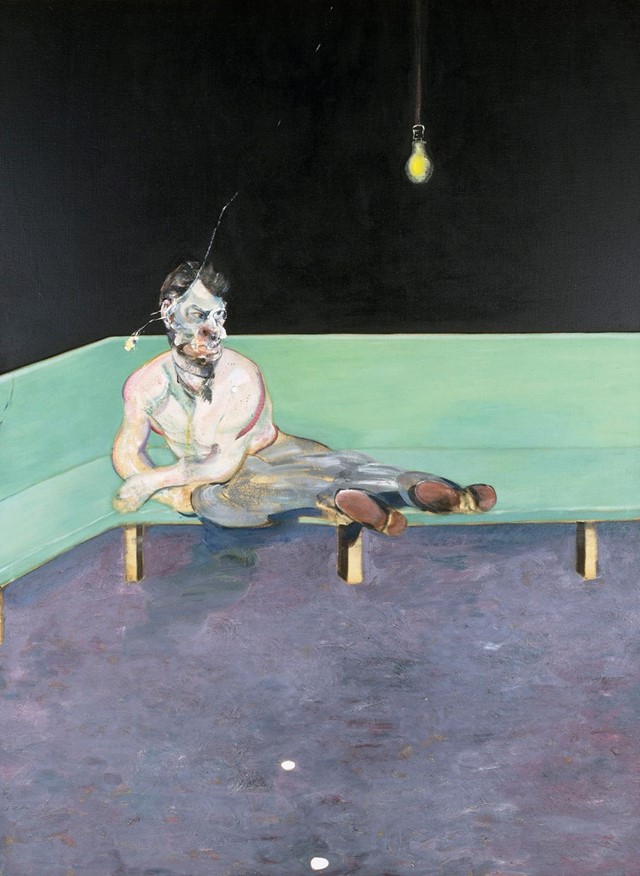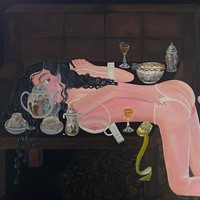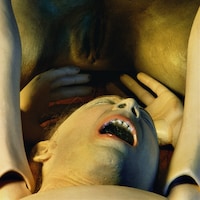On what would’ve been his birthday, we’ve chosen five philosophy and psychoanalysis books that inspired the transgressive painter
Francis Bacon read books just like he painted: deep, dark, and complex. The Irish figurative painter was said to have had an enormous library of books sprawled across his London studio, from modernist giants like T.S.Eliot, Joseph Conrad, and Marcel Proust, to Friedrich Nietzsche, Gilles Deleuze, Sigmund Freud, and Jacques Lacan reflecting the artist’s explicit interest in philosophy and psychoanalysis. In a 1966 interview with British art critic David Sylvester, he claimed to know some of these books “by heart”.
“I call it my imagination material,” he told French photographer Francis Giacobetti in 1991, during what would become his final interview before his death the following year. “I need to visualise things that lead me to other forms or subjects, details, images that influence my nervous system and transform the basic idea.” Like Bacon’s own artwork, which could be described as spectacles of horror – visceral, distorted images of crucifixions, mutilations, and monsters – his chosen literature was equally transgressive, often opposing existing philosophical and political ideas of their time.
On the release of Francis Bacon: Painting, Philosophy, Psychoanalysis, a series of philosophical essays that analyse Bacon’s work, and what would be the 113th anniversary of his birth, we’ve chosen five of Bacon’s favourite philosophy and psychoanalysis books.
FRIEDRICH NIETZSCHE’S BEYOND GOOD AND EVIL
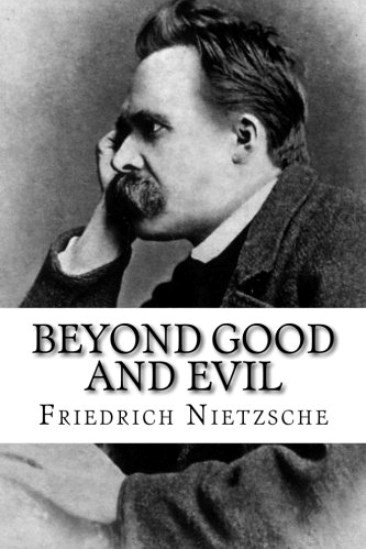
In this seminal text, German existentialist Nietzsche begins by critiquing philosophers who ground their ideas on principles such as self-consciousness, free will, and either/or, instead identifying imagination, danger, originality, and the “creation of values” as the key qualities of a philosopher.
With 296 aphorisms, ranging from a few lines to a few pages, Nietzsche grounds his philosophy from the perspective of “beyond good and evil”, or beyond a universal moral code. The driving force in all humans, Nietzsche believes, is a “will to power”, and while this is not given a strict definition, can roughly be defined as a thirst for life, or the drive to transcend the self through the exercise of creative power. This thirst for life can be seen across Bacon’s artscape. Paintings like “Head IV” and “Study for a Portrait”, for example, present their solitary subjects as tormented, isolated creatures, held in a perpetual screams.
MARCEL PROUST’S IN SEARCH OF LOST TIME
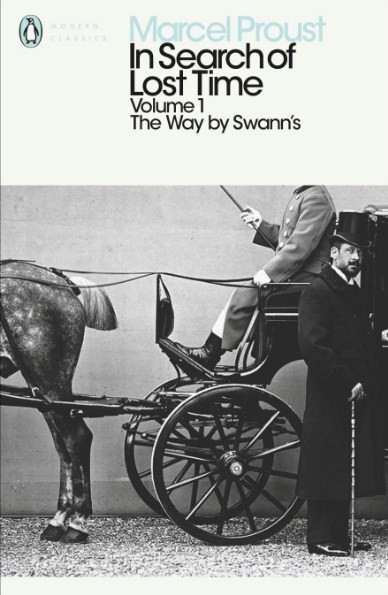
A fictional autobiography made up of seven volumes, In Search of Lost Time traces Proust’s life from the perspective of the narrator as a child and as an old man looking back on his youth.
Striking semblance to Bacon’s deformed, blurred subjects, Proust’s book examines the corroding effect of time, which he initially believes makes human experiences and feelings fade to nothing: historical events are forgotten or confused; social values change; as individuals, we forget the details of our own past. It’s only in the book’s final pages that he realises his past emotions and experiences are eternally present in his unconscious, and can survive in works of art.
JACQUES LACAN’S ECRITS
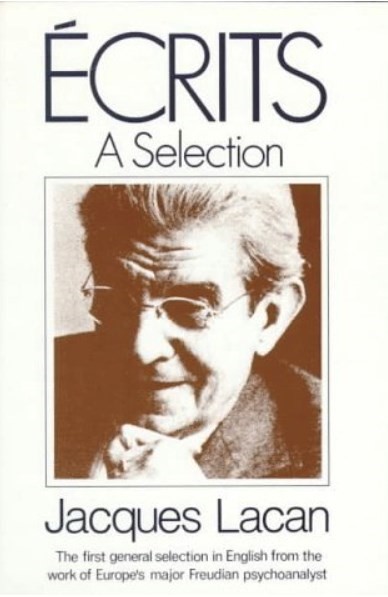
In the opening of Ecrits, Lacan presents his mirror phase theory, where he describes the first moments a child begins to recognise their reflection. The mirror image, Lacan says, represents the ego ideal, the subjective version of ourselves that we want to project onto the world. But it’s through associating the “I” with a mirror, the "Other", that the child experiences self-alienation: they can never experience the same totality that the mirror image appears to give them.
While there are many interpretations of how the mirror phase applies to Bacon’s paintings, it could be said that his subjects, dysmorphic and fragmented, embody the self-alienation felt by the “I” in relation to the "Other".
GEORGE STEINER’S IN BLUEBEARD’S CASTLE

Bacon’s artworks, while extremely personal, are also a product of their time: the shadowy aftermath of World War II and the horrors of the Holocaust. It’s a subject explored by Steiner in In Bluebeard’s Castle, which – originally published in 1971 – is one of the key cultural texts on post-World War II society, and a popular read for artists and cultural critics alike. Best described as a reflection on the death of western culture, Steiner argues that classical culture died with the Holocaust.
GILLES DELEUZE’S MASOCHISM
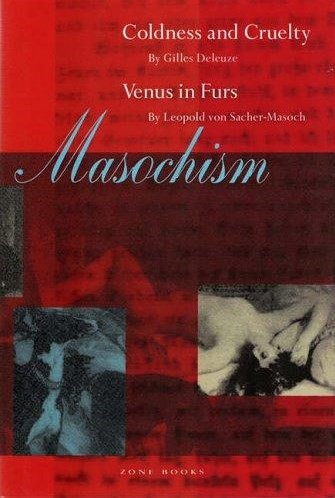
It was early beatings by his father for slipping into his mother’s dresses and underwear that Bacon attributed his taste for sadomasochism, so it’s no surprise that he’d be familiar with Deleuze’s text on Austrian novelist Leopold von Sacher-Masoch. For Deleuze, sadism and masochism are not complementary qualities, but two separate entities. Masochism, Deleuze argues, is more subtle and complex than simply the enjoyment of pain, and that any ‘punisher’ must be first educated and seduced into behaving in a way that he terms ‘quasi-sadistic’.
Francis Bacon: Painting, Philosophy, Psychoanalysis is out now.
Join Dazed Club and be part of our world! You get exclusive access to events, parties, festivals and our editors, as well as a free subscription to Dazed for a year. Join for £5/month today.
